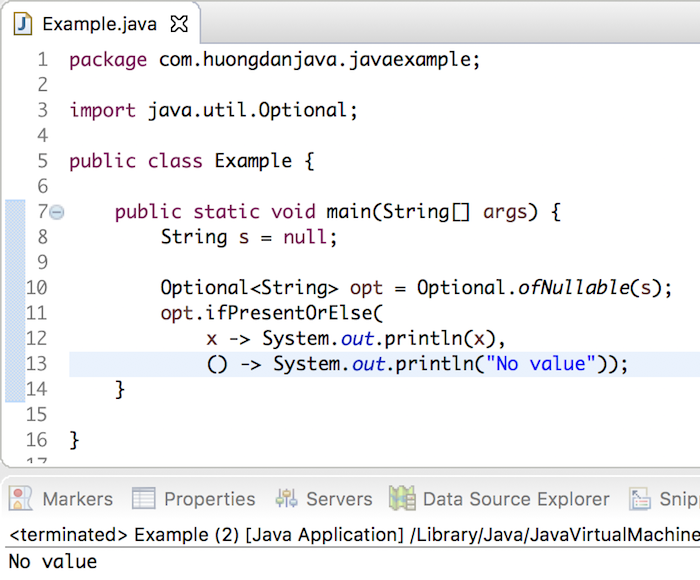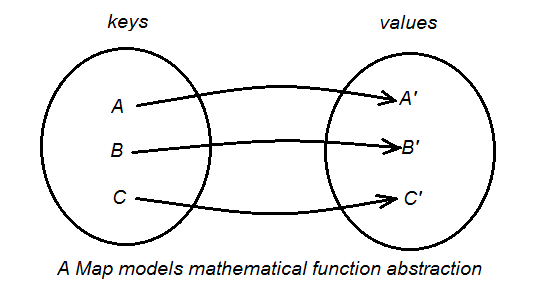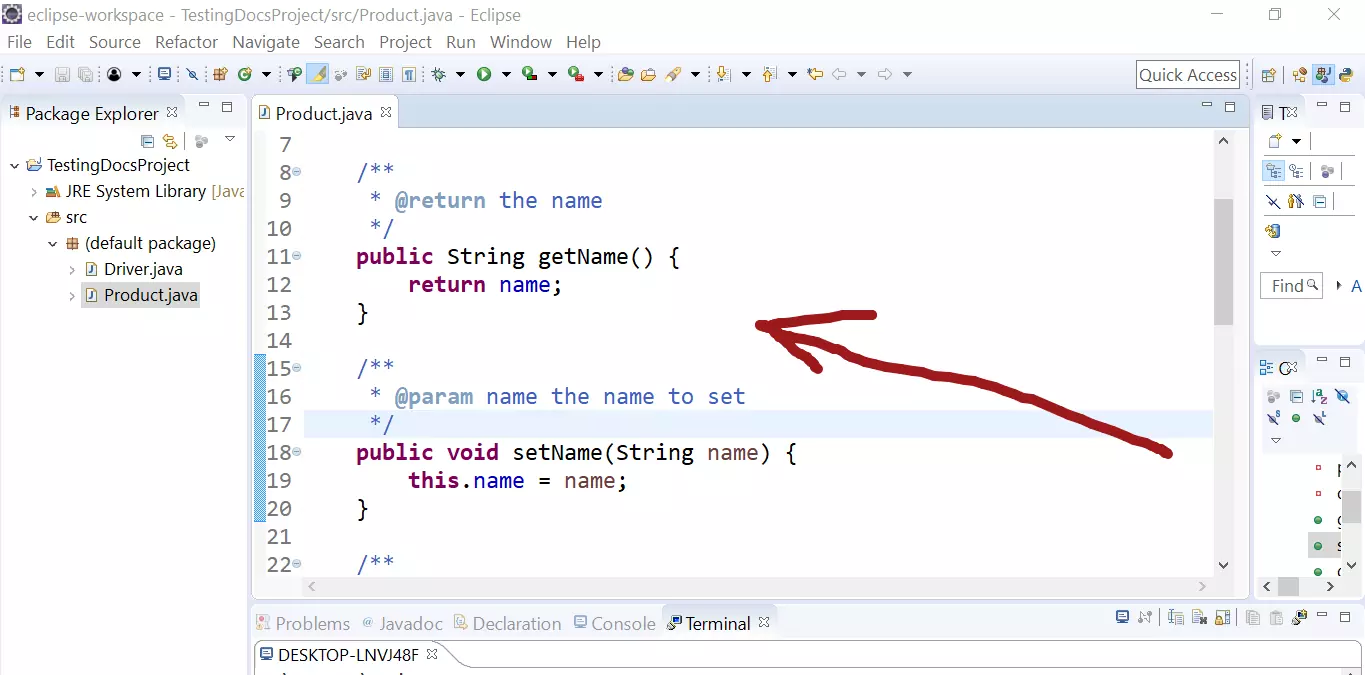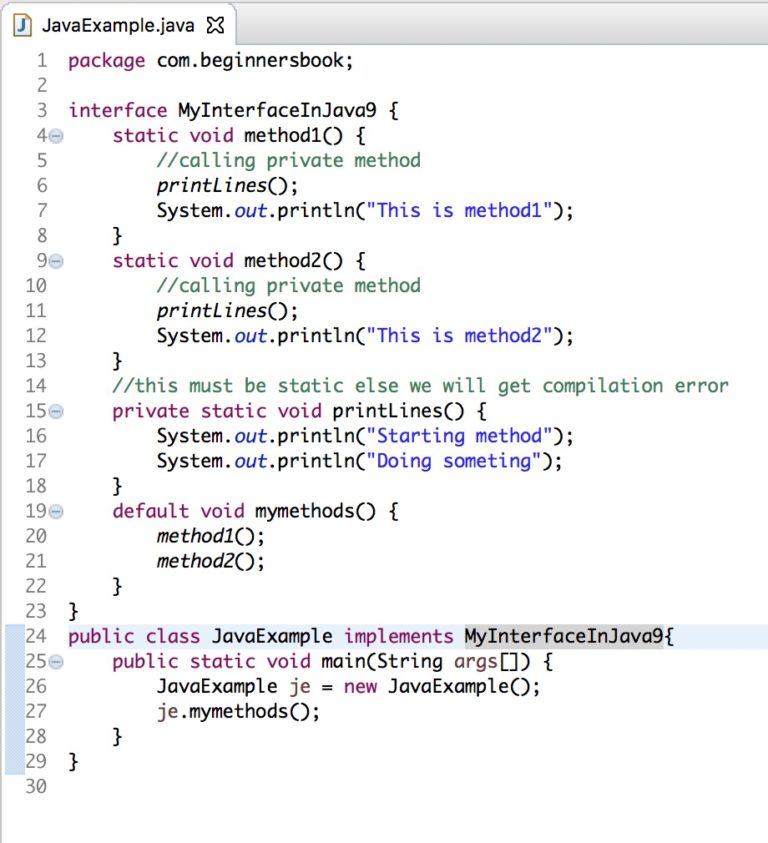Enhancing Map Functionality: Exploring The IfPresentOrElse Method In Java 9
Enhancing Map Functionality: Exploring the ifPresentOrElse Method in Java 9
Related Articles: Enhancing Map Functionality: Exploring the ifPresentOrElse Method in Java 9
Introduction
In this auspicious occasion, we are delighted to delve into the intriguing topic related to Enhancing Map Functionality: Exploring the ifPresentOrElse Method in Java 9. Let’s weave interesting information and offer fresh perspectives to the readers.
Table of Content
Enhancing Map Functionality: Exploring the ifPresentOrElse Method in Java 9

Java 9, released in 2017, introduced a significant enhancement to the Map interface: the ifPresentOrElse method. This method, while seemingly simple, significantly improves the readability and efficiency of code dealing with optional values within maps. This article delves into the intricacies of ifPresentOrElse, exploring its functionality, benefits, and practical applications.
Understanding the Need for ifPresentOrElse
Before delving into the specifics of ifPresentOrElse, it’s crucial to understand the context of its introduction. Maps, a fundamental data structure in Java, are designed to store key-value pairs. Often, developers need to access values associated with specific keys. However, a key might not always exist within a map, leading to potential NullPointerExceptions if not handled carefully.
Prior to Java 9, developers typically used containsKey to check for the existence of a key and then employed conditional statements to handle the presence or absence of the key. This approach, while functional, often resulted in verbose and repetitive code.
The ifPresentOrElse Method: A Concise Solution
The ifPresentOrElse method, introduced in Java 9, elegantly addresses the challenge of handling optional values within maps. This method allows developers to perform actions based on the presence or absence of a key in a map. Its signature clearly reflects this functionality:
void ifPresentOrElse(K key, Consumer<? super V> action, Runnable emptyAction);The method accepts three parameters:
-
key: The key whose associated value is being checked. -
action: AConsumerobject representing the action to be executed if the key is present in the map. Theactiontakes the value associated with the key as an argument. -
emptyAction: ARunnableobject representing the action to be executed if the key is absent from the map.
Illustrative Example
Consider a scenario where a map stores student names and their corresponding grades. We want to retrieve a student’s grade, but if the student is not found, we want to print a message indicating their absence.
Map<String, Integer> studentGrades = new HashMap<>();
studentGrades.put("Alice", 90);
studentGrades.put("Bob", 85);
String studentName = "Charlie";
studentGrades.ifPresentOrElse(studentName, grade -> System.out.println(studentName + " has a grade of " + grade),
() -> System.out.println(studentName + " is not found in the records."));In this example, ifPresentOrElse checks if the key "Charlie" exists in the studentGrades map. If it does, the action (printing the student’s name and grade) is executed. If the key is not found, the emptyAction (printing a message about the student’s absence) is executed.
Benefits of ifPresentOrElse
-
Improved Readability:
ifPresentOrElseprovides a concise and expressive way to handle optional values, making code more readable and understandable. -
Reduced Boilerplate Code: It eliminates the need for explicit
containsKeychecks and conditional statements, reducing the amount of code required to handle optional values. -
Enhanced Code Safety: By explicitly handling both the presence and absence of a key,
ifPresentOrElsehelps prevent potentialNullPointerExceptions, improving code stability. - Functional Programming Style: The method aligns with the functional programming paradigm by encouraging the use of lambda expressions for actions, promoting cleaner and more modular code.
Practical Applications
The ifPresentOrElse method proves invaluable in various scenarios:
-
Retrieving and Processing Optional Data: When working with databases or APIs that may return null or empty values,
ifPresentOrElseallows for safe and efficient handling of optional data. -
Configuration Management: In applications that rely on configuration files or environment variables,
ifPresentOrElsecan be used to retrieve and process configuration values, gracefully handling cases where a specific configuration parameter is missing. - Error Handling: The method can be employed to gracefully handle errors by providing alternative actions based on the presence or absence of specific data.
FAQs
Q1: How does ifPresentOrElse differ from computeIfPresent and computeIfAbsent?
A1: While all three methods deal with optional values in maps, they differ in their purpose. ifPresentOrElse performs actions based on the presence or absence of a key. computeIfPresent updates the value associated with a key if it exists, while computeIfAbsent adds a new key-value pair if the key is absent.
Q2: Can ifPresentOrElse be used with Optional objects?
A2: No, ifPresentOrElse is specifically designed for maps. For working with Optional objects, use the ifPresent and orElse methods provided by the Optional class.
Q3: Is ifPresentOrElse suitable for all scenarios involving optional values in maps?
A3: While ifPresentOrElse is a powerful tool, it may not be the most appropriate solution for all scenarios. For instance, if you need to modify the value associated with a key, computeIfPresent might be a better choice.
Tips for Using ifPresentOrElse
-
Keep Actions Concise: Aim to make the
actionandemptyActionconcise and focused, avoiding complex logic within the lambda expressions. - Favor Readability: Prioritize readability by using meaningful variable names and clearly defining the purpose of the actions.
-
Consider Alternatives: For specific scenarios, explore alternative methods like
computeIfPresentorcomputeIfAbsentto ensure optimal code efficiency and clarity.
Conclusion
The ifPresentOrElse method, introduced in Java 9, represents a significant enhancement to the Map interface. It empowers developers with a concise and expressive way to handle optional values in maps, improving code readability, reducing boilerplate code, and enhancing code safety. By embracing this new method, developers can streamline their code and enhance the overall robustness of their applications.








Closure
Thus, we hope this article has provided valuable insights into Enhancing Map Functionality: Exploring the ifPresentOrElse Method in Java 9. We hope you find this article informative and beneficial. See you in our next article!